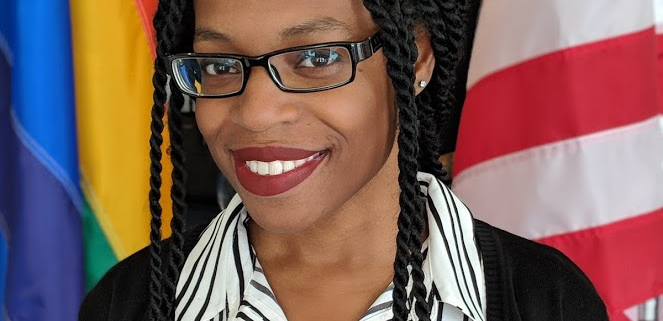‘You are animals who disgust me’: A school board candidate’s history of racist Facebook posts
August 18, 2018 at 4:15 PM
Richard Jankowski used Facebook to spew plenty of race-based vitriol — against former president Barack Obama, NBA player LeBron James or anyone supporting affirmative action — but in August 2014, as protesters poured into the streets over the police shooting of Michael Brown in Ferguson, Mo., Janowski boiled over.
“You g—–n animals in Missouri make me sick!” he typed in the public post originally reported by the New Jersey Globe, a political reporting site. “Another black criminal gets killed after assaulting a white cop and you pieces of s–t want justice? You are not Americans, you are animals who disgust me.”
Eight months later, Ferguson was on his Facebook page again, as he called for violence against protesters.
“So now I watch videos of the ‘protesters’ throwing trash cans and any other items at any white person they see…….time to start firing bullets into these f—–g monkeys and send them to their graves.”
Jankowski is one of six candidates running for three open seats on the school board in Monroe Township, N.J. In the district’s high school, more than a third of students identify as minorities, according to U.S. News & World Report.
It is not uncommon for news organizations to look closely at the backgrounds of people running for elective office. What is uncommon is for disparaging information to be laid out in a public social media post, easy for the world to see.
In posts uncovered by the Globe, whose article included images of Jankowski’s Facebook page, the candidate made insensitive or insulting remarks about: blacks, gays, people with mental disabilities, protesters, kneeling NFL players and specifically Eagles safety Malcolm Jenkins, O.J. Simpson, Caitlyn Jenner, Trayvon Martin, affirmative action supporters, NASCAR driver Tony Stewart, Cher and “whoever the hell Moby is” — in addition to Obama, James and the protesters in Ferguson.
He offered apologies, conversely, to “my law abiding, hard working black friends that feel as though I have insulted them, it couldn’t be further from the truth.”
His personal Facebook page and the one for his campaign had both been deactivated or set to private by Saturday morning, and Jankowski did not respond to messages seeking comment.
Members of his community, meanwhile, were speaking out, either distancing themselves from Jankowski’s splenetic remarks or mobilizing to make sure he doesn’t attain the office he seeks.
Education leaders in the community said Jankowski’s comments do not reflect the board he was campaigning to join. The closest he’s come to the school board was being “vocal” at some meetings, Board of Education Vice President James Henderson told NJ.com.
Monroe Township Board of Education President George Caruso told NJ.com that anything Jankowski has said “doesn’t pertain to any school business. That’s between that gentleman and the rest of the community. He’s not on the school board.”
Related: [A teen spread a racist video of a black classmate eating chicken. Both face criminal charges.]
When Loretta Winters, the head of the Gloucester NAACP, heard about Jankowski’s comments, she mobilized an effort to ensure he never took a seat on the dais of the school board.
“You can’t refer to black folks or anybody as monkeys or animals,” she told The Washington Post. “And to say that ‘we need to get our guns out, and be shooting them,’ to me that’s almost a terroristic threat against any people of color.”
She said that similar reports ran in a local newspaper this week and that the next morning she received a phone call from Jankowski.
He “apologized profusely,” she said. More important, he told her he was dropping out of the race.
She said she accepted his apology but felt that he showed contrition only because “he got exposed.”
“Even though some of these comments were made a couple years ago, that’s who you are,” she said. “He cannot represent our children and our diverse community with thoughts like that.”
This post initially gave an inaccurate location for Monroe Township. This post has been corrected and updated.
https://www-washingtonpost-com.cdn.ampproject.org/v/s/www.washingtonpost.com/amphtml/news/education/wp/2018/08/18/you-are-animals-disgust-me-a-school-board-candidates-history-of-racist-facebook-posts/?amp_js_v=0.1&usqp=mq331AQICAEoATgAWAE%3D#origin=https%3A%2F%2Fwww.google.com&prerenderSize=1&visibilityState=prerender&paddingTop=54&p2r=0&horizontalScrolling=0&csi=1&aoh=15369316242362&viewerUrl=https%3A%2F%2Fwww.google.com%2Famp%2Fs%2Fwww.washingtonpost.com%2Famphtml%2Fnews%2Feducation%2Fwp%2F2018%2F08%2F18%2Fyou-are-animals-disgust-me-a-school-board-candidates-history-of-racist-facebook-posts%2F&history=1&storage=1&cid=1&cap=swipe%2CnavigateTo%2Ccid%2Cfragment%2CreplaceUrl









